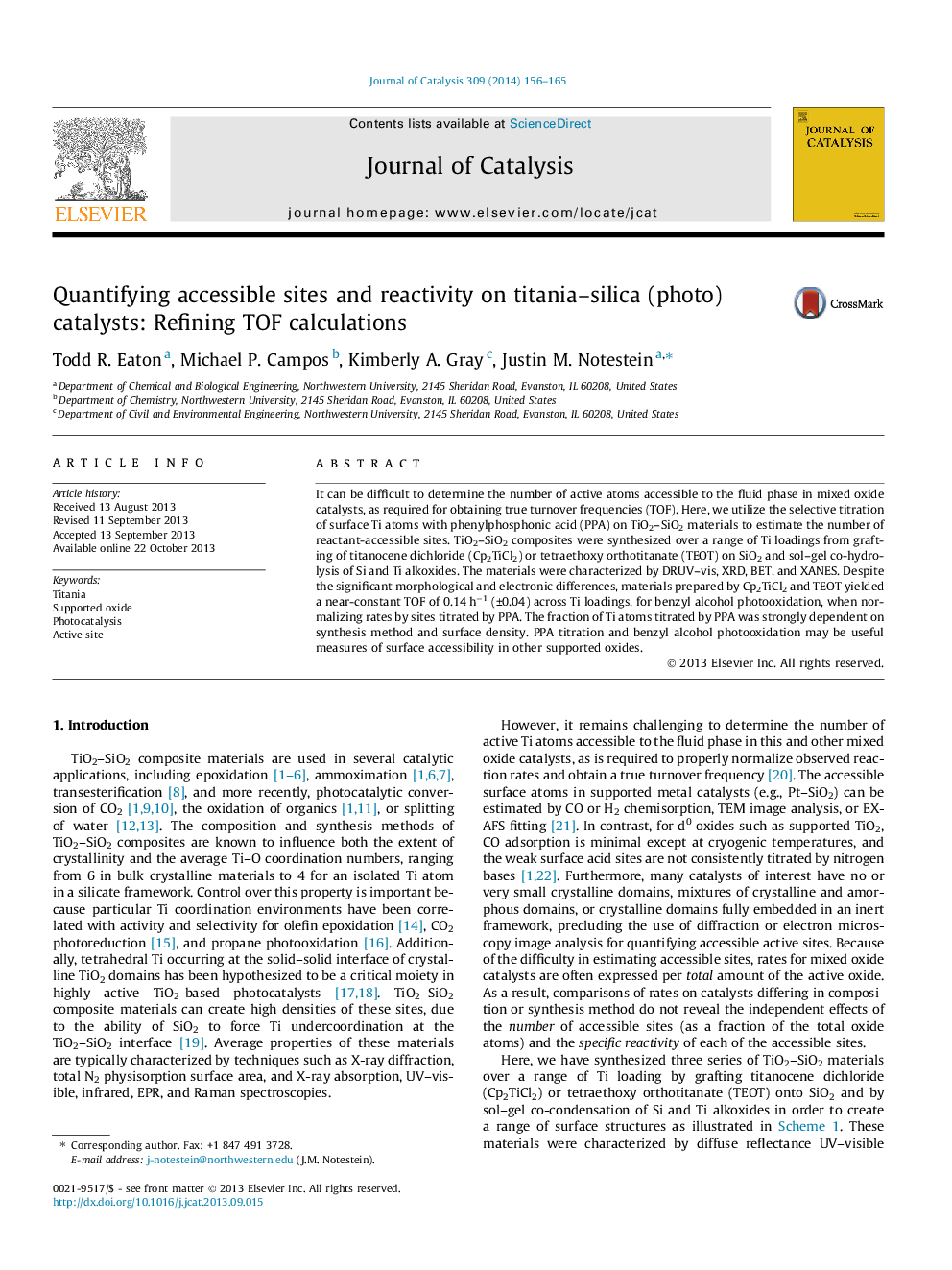| Article ID | Journal | Published Year | Pages | File Type |
|---|---|---|---|---|
| 61106 | Journal of Catalysis | 2014 | 10 Pages |
•Surface structures of supported TiO2 are controlled by precursor and loading.•XANES shows materials ranging from 4- to 6-coordinated Ti species.•Phenylphosphonic acid selectively titrates surface Ti to maximum of 3 nm−2.•All Ti accessible below 2 Ti-nm−2; drops to 30% accessible by 8 Ti-nm−2.•Benzyl alcohol oxidation is structure insensitive when normalized by titration data.
It can be difficult to determine the number of active atoms accessible to the fluid phase in mixed oxide catalysts, as required for obtaining true turnover frequencies (TOF). Here, we utilize the selective titration of surface Ti atoms with phenylphosphonic acid (PPA) on TiO2–SiO2 materials to estimate the number of reactant-accessible sites. TiO2–SiO2 composites were synthesized over a range of Ti loadings from grafting of titanocene dichloride (Cp2TiCl2) or tetraethoxy orthotitanate (TEOT) on SiO2 and sol–gel co-hydrolysis of Si and Ti alkoxides. The materials were characterized by DRUV–vis, XRD, BET, and XANES. Despite the significant morphological and electronic differences, materials prepared by Cp2TiCl2 and TEOT yielded a near-constant TOF of 0.14 h−1 (±0.04) across Ti loadings, for benzyl alcohol photooxidation, when normalizing rates by sites titrated by PPA. The fraction of Ti atoms titrated by PPA was strongly dependent on synthesis method and surface density. PPA titration and benzyl alcohol photooxidation may be useful measures of surface accessibility in other supported oxides.
Graphical abstractFigure optionsDownload full-size imageDownload high-quality image (58 K)Download as PowerPoint slide
